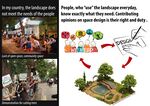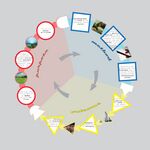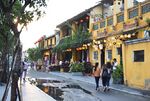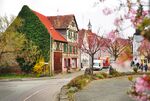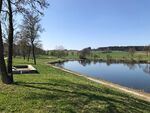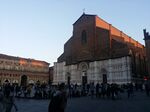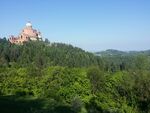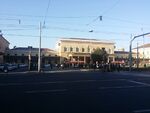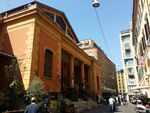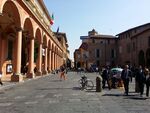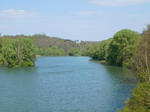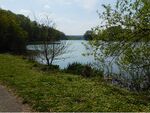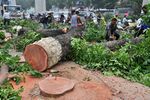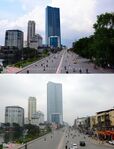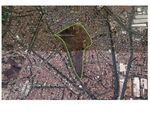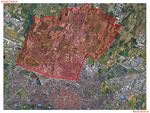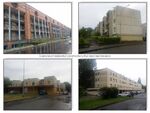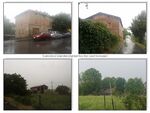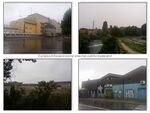LED Online Seminar 2017 - Working Group 2
--> Back to working group overview
Dear working group members. This is your group page and you will be completing the template gradually as we move through the seminar. Good luck and enjoy your collaboration!
Assignment 1 - Reading and Synthesizing Core Terminology
- You can read more details about this assignment here
- Readings are accessible via the resources page
Step 1: Your Landscape Democracy Manifestoes
Step 2: Define your readings
- Please add your readings selection for the terminology exercise before April 12:
A: Landscape and Democracy - Mapping the Terrain
- Antrop, Marc; Kühne, Olaf (2015) Concepts of Landscape, in: Landscape Culture - Culturing Landscapes. The Differentiated Construction of Landscapes (Bruns, Kühne, Schönwald, Theile ed.) (Julia)
Landscape Concepts:
- Constructing Landscape Conceptions - Kucan, Ana (Sander)
B: Concepts of Participation
- Multiple views participatory design - Henry Sanoff (Maurizio)
- The powerful, the powerless, and the experts - John Gaventa (Julia)
C: Community and Identity
- Design for ecological democracy - Hester, Randolph (Maythe)
- Culture and changing landscape structure - Nassauer, Joan Iverson (Phan)
- Cinematic Landscapes - Welk Von Mossner, Alexa (Phan)
D: Designing
- Westport Case study - Kot, Douglas and Ruggeri, Deni (Sander)
- Design Charrette: A Vehicle for Consultation or Collaboration? - Nicola Dawn Smith (Maurizio)
E: Communicating a Vision
- Reading the Landscape - Simon Bell, EMU Tartu (Maythe)
- Storytelling example from the Scottish Islands (Maurizio)
Steps 3 and 4: Concepts Selection and definition
- Each group member selects three relevant concepts derived from his/her readings and synthesize them/publish them on the wiki by April 30, 2017
- Group members reflect within their groups and define their chosen concepts into a shared definition to be posted on the wiki by May 10, 2017.
- Other group members will be able to comment on the definitions until May 20, 2017
Concepts and definitions
Author 1: Julia
- Concept 1: Community Power Structure Research: People can participate in the formation of opinion through gaining access to about important topics like tax rates, property actions,... (Gaventa, John (1980): The Powerful, the Powerless, and the Experts: Knowledge Struggles in an Information Age)
- Concept 2: Right-to-Know Movements: Citizens launche campaigns and protest groups underlining the right to know the content of important topics and decisions. (Gaventa, John (1980): The Powerful, the Powerless, and the Experts: Knowledge Struggles in an Information Age)
Author 2: Phan
- Concept 1: Human perception and culture changes landscapes and vice versa. The landscape can reflect the character and culture of a community living there. "People do not stand apart from the landscape, but rather are participants in the landscape in a situation of mutual influence". (Nassauer, Joan Iverson (1995): Culture and Changing Landscape Structure).
- Concept 2: Cultural concepts of nature are different from scientific concept of ecological function. Improving the natural landscape while respecting the indigenous ecosystem is necessery. "What looks like beautiful nature may be a polluted former landfill, and what looks like a neglected abandoned lot may be a rich ecosystem". (Nassauer, Joan Iverson (1995): Culture and Changing Landscape Structure).
- Concept 3: In a movie, the director tell a story through beautiful secne. Similarly, the landscape may contain meanings and stories about the communities around it. (Welk Von Mossner, Alexa (2014): Cinematic Landscapes)
Author 3: Sander
- Concept 1
- When planning on making a design for a community, listen to the residents. Find out what they want and what would improve their community life. Recourse used: Kot, Douglas and Ruggeri, Deni: Westport Case Study.
- Concept 2
- Designs should be made in order to strengthen the character of the town or community where you are designing for. It should fit in the landscape, architectural character and lifestyle of the residents in the town. Recourse used: Kot, Douglas and Ruggeri, Deni: Westport Case Study.
- Concept 3
- Keep an eye on the environment of the designing area. In order to deliver the best design, you have to find the symbolic behind the place and the residents relationship with it. On this way you can create an uniformity between the existing landscape and your design idea. Recourse used: Kucan, Ana (2007). Constructing Landscape Conceptions. In: ECLAS (ed.). JoLA spring 2007, 30-41. Munich: Callwey.
Author 4: Maythé
- Concept 1:This desgined cities should be formed by applied ecology, hand-on participation, act as communities by sharing information, experiences. building an environment that reflects our values. "Design for ecological democracy"-Hester, Randolph.
- Concept 2: Act as communities, Be ecologically resilient, cities that touch our heart by impelling form. "Design for ecological democracy"-Hester, Randolph.
- Concept 3:By reading the landscape we need to analyse the character, characteristics, elements, features and characterisations and from them making a 6 step process that carried out at a range of scales: Defining the scope, desk study, field survey, classification and description, deciding the approach to judgements, making judgements.
Author 5: Maurizio
- Concept 1 - Development of the citizens’ culture, social capital and collective intelligence - [Sanoff, Henry (2014): Multiple Views of Participatory Design]
- It is through the various forms of participatory democracy that: 1) people can play an active role in designing landscapes that live on a daily basis (people not as ordinary end users); 2) citizens express their opinions about the issues directly affecting them; 3) people can actually influence with their ideas the decision-making process on problem solving. There is a real risk that the same forms of participatory democracy lead to perpetual conflicts, lack of confidence in the political model and unnecessary / expensive delays. In order to ward off the abovementioned chaos, it is essential that people are able to share their experiences in an orderly manner, with the purpose of solving problems. It is imperative that within the population is generated what Atlee calls "Collective Intelligence". The greater the number of people will be involved, the greater the number of individual experiences will be available and the consequence will be a more powerful and shared result. For a concrete and effective participation, it is important that people: 1) be sufficiently informed about the problems to be resolved; 2) be adequately informed about the context and constraints to which they operate; 3) acquire participatory skills; 4) gain more sensitivity to the problems of others; 5) become more tolerant of different points of view and change; 6) develop forms of community pride; 7) increase, through participation, their knowledge, mutual awareness and respect; 8) acquire the ability to make more reflective judgments; 9) develop a higher sensitivity / civic education.
- Concept 2 - Role of local administrations and professionals - Design and management of participation - [Sanoff, Henry (2014): Multiple Views of Participatory Design]
- Citizens' participation does not exclude the role of municipal authorities and professionals. Dialogue between citizens, professionals and municipal authorities on needs and resources is indispensable; through the comparison, each one brings its own specific competencies (local knowledge, professional knowledge and administrative knowledge). Before defining the specific objectives to pursue through the different models of collective participation, it is essential to set up a strategic plan based on the people’s ideas. Local administrations need to design together with citizens a good strategic planning based on information gathering, exploration of alternatives, and the study of implications in the future. A valid strategic planning, as well as accommodating divergent interests and values, must be flexible and sufficiently specific to ensure proper monitoring of the results. Based on the aforementioned strategic plan it is possible to define the specific objectives to pursue through the participatory events. It is task of designers to decide how to promote deliberative processes, especially in a conflictual / contradictory context (e.g., Citizen Deliberative Councils "appropriately selected heterogeneously" Vs Participatory meetings open to all). Participation is a particularly complicated concept that requires proper planning of participatory events and participation programs (Whom to involve? What to do? Where to go through participation? How to involve? When to engage?) in order not only to optimize the process but also above all to satisfy the people involved without disillusioning them. Designers have to identify among the different methods of participation (Community surveys, advisory boards, task forces, neighbourhood meetings, public hearings) what best suits goals (choosing the best strategy to ensure that people are able to make concrete decisions and ensure the highest level of participation). Depending on the objectives, it is task of the designers to identify the best participatory event model through which: 1) Promote participation, social integration and sense of belonging; 2) Develop the sense of community and attachment to the context; 3) Facilitate the involvement of people without design expertise; 4) Enhance the interpersonal relationships essential to achieving common goals.
- Concept 3 - "Voting" is a partial form of democracy - [Sanoff, Henry (2014): Multiple Views of Participatory Design]
- "Voting" is a partial form of democracy. There are various ways in which to interpret the concept of consensus, from the old one of "consensus gentium" to the political one in which a majority supports a particular proposal. In any case, consensus should be reach in a concerted, stress-free manner, with dialogue and exploring different opinions. The deliberative democracy is based on the conscience of differences, the need for compromise and the growing sense of belonging. The legitimacy of a decision does not depend on its content but on the confidence in the process by which it was taken (fair, open, democratic) and the ability of citizens to play a role in defining it. In participatory processes, the satisfaction of citizens/users does not depend much on the degree to which their needs are met but rather in the feeling that they have contributed to the decision-making process.
- Concept 1 - Something about Charrette - [Smith, Nicola Dawn(2012): Design Charrette: A Vehicle for Consultation or Collaboration]
- Depending on the needs, the "Charrette" technique can be expressed in infinite ways. There are no two equal Charrettes but in all of them it is possible to recognize a common structure consisting of the following three phases: 1. Gathering information; 2. Design event; 3. Implementation. The time to use for a successful "Charrette" is at least 4 days. It is a consultation and involvement tool mainly used in the private sector of urban planning and architecture but could be used in many other areas. Among the design tools that employ drawings, mental maps, and site related graphics, the "Charrette Design" is the only one that improves the knowledge of stakeholders before converging information. The "Charrette" have the prerogative of expanding education and research. Charrette promotes internal creativity and decision-making convergence in order to generate shared outcomes and to smooth out discord.
- Concept 2 - The importance of drawing - [Smith, Nicola Dawn(2012): Design Charrette: A Vehicle for Consultation or Collaboration]
- To actively participate in a "Charrette" human qualities are fundamental rather than acquired skills, anyway in a "Charrette" is privileged the experience of those who know how to draw quickly at the last minute and manage to communicate through sketches. Drawing does not only help design, but is primarily a method of communication between the participants. Drawings generate more direct and more accessible knowledge. “Conversing with drawings is a rare skill”. The highest moment in a Charrette is when a designer reaches consensual approval through a sketch. The drawings made during a Charrette are real contracts drawn through pictures.
- Concept 3 - The importance of time - [Smith, Nicola Dawn(2012): Design Charrette: A Vehicle for Consultation or Collaboration]
- The time compression that characterizes Charrette makes the process more efficient and facilitates problem solving in a creative way because: 1)Restricts consultation between stakeholders and excludes the possibility of sterile negotiations; 2)Encourages people to "think outside the box"; 3)Maintains the survey material and the key points of the decision-making process.
- Concept 1 - A system for integrating the different parts of the city - [Storytelling example from the Scottish Islands]
- Changes in an ancient city like Stromness have increased the contrast between the historical social core and the peripheral economic and residential area. The purpose is should be to create a single integrated functional unit that respects the character of the different parts of Stromness.
- Concept 2 - Necessity of flexibility - [Storytelling example from the Scottish Islands]
- There is a need to re-learn how to build places in relation to the external environment, developing flexibility and ability to cope with changes.
- Concept 3 - Sense of belonging - [Storytelling example from the Scottish Islands]
- The force for change should come from the local community rather than being imposed by the public sector. Initiatives born out of the citizens may be more effective for the city and to create in the local community a sense of ownership.
Step 5: Reflection
- Please write, as a group, a 250 words reflection on your discourse and document it here
Step 6: Revised manifestoes
- please look again at your initial manifestoes and update them with any new aspects/prespectives you have taken up during this seminar
- Updatedmanifesto1.jpg
xy's updated manifesto
- Updatedmanifesto2.jpg
xy's updated manifesto
- Updatedmanifesto3.jpg
xy's updated manifesto
- Updatedmanifesto4.jpg
xy's updated manifesto
- Updatedmanifesto5.jpg
xy's updated manifesto
Assignment 2 - Your Landscape Symbols
- You can read more details about this assignment here
Landscape Symbols: Julia
Landscape Symbols: Duy Phan
Sander's Landscape Symbols
The reconstructed Roman fort entrance in Welzheim is part of an enormous 550km long defence wall with look-outs, forts,.. that defined the border of the upper germanic limes. This part of the UNESCO World Heritage gives us a look at the rich history our world has known. It shows us the way people lived ages ago, and gives us the opportunity to pass this knowledge and history to others. Location: Welzheim, Germany. Geo-location: 48°52'17.4"N 9°38'29.1"E
This old, 23km long railway connected till 1988 a few villages to each other with a steamtrain passing by. These days the railway is only being used as tourist attraction. During the summer months a steam train rides the 23km rails. This tourist attraction keeps the link between the history alive and makes sure the railway stays in good condition. This way of bringing alive of heritage gives the city of Welzheim an extra option in developping its city. Location: Welzheim, Germany. Geo-location: 48°51'50.9"N 9°38'21.0"E
The Lake is a loved place for people living in the surroundings to spend a few hours during nice days. It allows you to get in contact with people or to meet new people. Such public places are important places to get social contact and get out of the cities. Location: Welzheim, Germany. Geo-location: 48°54'06.1"N 9°38'17.2"E
- Symbol yourname photovoice4
add a caption (one paragraph max) description of the symbolism, interpretation, as well as geo-location
- Symbol yourname photovoice5
add a caption (one paragraph max) description of the symbolism, interpretation, as well as geo-location
Landscape Symbol: Maythé García Velarde
- Symbol yourname photovoice4
add a caption (one paragraph max) description of the symbolism, interpretation, as well as geo-location
- Symbol yourname photovoice5
add a caption (one paragraph max) description of the symbolism, interpretation, as well as geo-location
Maurizio.b's Landscape Symbols
The unfinished Basilica of San Petronio is the sixth largest church in Europe (it is the largest brick Gothic church). The Episcopal Church of Bologna is not San Petronio but the near Saint Peter's Cathedral. The construction started in 1390 under the supervision of the architect Antonio di Vincenzo. In 1514 there was a new project by Aruino degli Arriguzzi. The Basilica had to become bigger than St. Peter's in Rome, but Pope Pio IX requested to build "Archiginnasio" (the university library) 12 meters far from the church and its construction had to stop. The building was built for civic will, not ecclesiastical. It was an act of religious faith but above all political. It is a monument that represents municipal ideals of freedom and authonomy. Localization: 44°29'36.5"N 11°20'35.2"E
The hills of Bologna, the green belt of the city, are surely one of the most significant symbol. They ensured the livelihood of Bologna since ancient times; noble families used to pass their holiday in villas on the hills and little towns were born through the ages. Right next to the "Gothic line", the hills had been of help to partisans and allied to take refuge, in fact, the land is littered with memorial monuments. Nowadays besides the production of wine and other food excellences, the hills are one of the main places of leisure for all the citizens. Localization: 44°18'10.0"N 11°12'49.6"E
The railway station of Bologna is one of the most important italian railways in number of passengers and above all for passing trains. It is the principal railway linking node between north and south. The first project, dating from the middle of the XIX century, turned out to be unsuitable for the excessive trains congestion. The present railway was designed by Gaetano Ratti and opened in the 1871. Continuous improvements and expansion have been necessary and the process is still ongoing. The railway represent a symbol for the city not only for its practical aim but overall for the most serious act of terror that occurred in Italy in the second post-war period, on the 2nd of august 1980 at 10:25 am. This is considered one of the last act of the strategy of terror (Years of Lead). Localization: 44°30'20.7"N 11°20'36.1"E
The “Mercato delle erbe”, literally “Market of herbs”, is the largest covered market in the historical center of Bologna, since 1910. It was built to offer shelter to the merchants that could no longer stay in Piazza Maggiore (the most renowned square in the city). Since 2014, in addition to the presence of merchants that sell typical products or food, after renovation of some spaces in the market, there are inside the building also restaurants, bars, pizza restaurants and sandwich shops. In the “Mercato delle erbe” you can touch the historical gastronomical culture of Bologna. I’ve chosen this place mainly to highlight how similar reality nowadays must increasingly deal with supermarket and commercial center perhaps more comfortable but less related to the context and the history of the site. Localization: 44°29'46.0"N 11°20'21.8"E
Via Zamboni connecting the two towers to medieval city gate named San Donato passes through the university area. Like most of the streets of the old town it is full of historical buildings of the Middle Ages, commemorative plaques and monuments that recall the past of the city. However, what distinguishes this way is the presence of many of the seats of the faculties of Alma Mater Studiorum (Founded in A.D. 1088, it is the oldest university in Europe). The constant presence of the students makes via Zamboni particularly lively all day long. In my opinion, thanks to the presence of more than 87,000 young students of the Alma Mater Studiorum, the Bolognese citizens have unknowingly the ability to keep open their minds. Localization: 44°29'46.3"N 11°21'01.7"E
Assignment 3 - Role Play on Landscape Democracy "movers and shakers"
- You can read more details about this assignment here
Assignment 4 - Your Landscape Democracy Challenge
- You can read more details about this assignment here
- Each group member will specify a landscape democracy challenge in his/her environment
Landscape Democracy Challenge 1 (Julia)
- Wendebachstausee
Renewing this lake was really costly so that the state of Lower Saxony (Niedersachsen) wanted to drain the whole lake. The association "Erholungsgebiet Wendebachstausee" protestet against it, because there are rare plants and animals in this territory and it is used as a recreation area by many people.
Your references:
- http://www.goettinger-tageblatt.de/Goettingen/Uebersicht/Wendebachstausee-Umbau-koennte-im-Herbst-starten (05.05.2017)
- http://www.wiki-goettingen.de/index.php/Wendebachstau (07.05.2017)
Landscape Democracy Challenge 2 (Phan)
- '6700 trees' project and the protest of people
Your references:
- http://www.rfa.org/english/news/vietnam/trees-03202015172506.html
- http://english.vietnamnet.vn/fms/vietnam-in-photos/126255/photos--hanoi-streets-without-trees--after-city-cancels-plans-to-plant-new-trees.html
Landscape Democracy Challenge 3 (Sander)
- Car free zones in the city of Ghent
A second issue is that inhabitants and visitors from outside the city complain that it takes them way longer to get from a certain point in the city to another one. Also that they have to walk parts because they can't reach their destination by car anymore, and that parking tickets are too expensive.
Your references:
- nieuws.vtm.be
- https://stad.gent/mobiliteitsplan
- Deredactie.be
Landscape Democracy Challenge 4 (Maythe)
- Give a title to your challenge
Your references:
Landscape Democracy Challenge 5 (Maurizio)
- Brief introduction:
In 1998, the “District contracts” (in Italian “Contratti di Quartiere” – CdQ) belonged to a larger family named “Complex urban plans” (in Italian “Programmi Urbani Complessi”) the purpose of which was an urban multi levels and multidisciplinary regeneration (each of that plans aimed to a different goal).
In particular, the CdQ aimed to urban regeneration of city areas with:
1) widespread degradation of buildings;
2) widespread degradation of environment;
3) lack of services;
4) absence of social cohesion;
5) serious social hardship;
6) social and architectural decline.
The CdQ have been one of the last instance in which the State allocated, through a nation tender, funds for renovation in the field of the public housing.
The funds were assigned by a competition procedure. Each Italian region had the chance to show, to a specially designed State Commission, 5 proposals realized by municipal administrations.
Focus points through which the winning proposals would be selected were:
SUBJECTIVE INDEX
1) “Municipal features” such as demography, unemployment rate, etc.;
2) “Characteristics of the defined area” of intervention such as percentage of public housing, rate of schooling, housing density etc.;
3) Existence and entity of other “public or private funds” involved in the project;
4) Existence and entity of other “regional funds” involved in the project.
NB) Funds allocated through the tender could be employed only in public housing and, minimally, in primary public works connected to it. However, to win the tender, the proposal had to be addressed to a broader context so other funds were necessary.
EVALUTATIVE INDEX
5) “CdQ features” referred to targets in social, occupational and construction-planning settings;
6) “Preliminary project features” such as architecture, environmental sustainability, links to the background;
7) Trial project features with a special interest to contents in these areas:
a) morphological quality; b) ecosystem quality; c) fruition quality; d) system quality.
NB) CdQ should have met these needs:
1) to achieve information about building experimentation;
2) to study new strategies in the area of urban regeneration.
In the tender was strongly recommended to define:
1) innovative interventions over the urban building tradition so as to enhance the context;
2) methods to promote the social integration, the employment and the citizens participation to the project since the earlier stages.
However, these points were not particularly important in defining the winner municipalities.
In 1998, there were no particularly degraded neighbourhoods in Bologna, but there were a lot of situations in which few degraded elements compromised their context. Based on the reports presented to the law enforcement and the local news articles, the municipality had already identified the "Pescarola-Beverara" area, in the north of city, as a critical area that needed to be requalified. For this same area, the municipality had already carried out a master plan. CdQ was the occasion to regenerate the “Pescarola-Beverara” context. However, the very preliminary unfinished projects available were not adequate to the requirements of the tender. The local administration did not have the means, the knowledge and the time to draw up an appropriate project. For the aforementioned reasons the municipality hired a private design studio “Ricerca e Progetto, Galassi, Mingozzi e Associati”.
The Bolognese project to be presented to the specially designed State Commission was carried out by the operational units of the City of Bologna and by the design studio “Ricerca e Progetto, Galassi, Mingozzi e Associati”.
The project had three main objectives:
1) a general and profound regeneration of the "Pescarola-Beverara" context north of Bologna;
2) improve the ecosystem quality of the context through particularly innovative construction and technological interventions for a residential building area of those years;
3) improve the quality of life in the context through experimental assistance models for the elderly, disabled, and marginalized families in severe housing emergency.
In the tender was demanded to design appropriate monitoring methods on experimental interventions that would be implemented.
At the end of selection procedure, the Bolognese project achieve the seventh place in the national ranking list by obtaining the State funds. The same project was finished, in its executive condition, by the design studio “Ricerca e Progetto, Galassi, Mingozzi e Associati”. The aforementioned design studio carried out the works supervision. The realization of the works took place within the set times.
1) The general redevelopment project for the area has planned:
A) The recovery of a dilapidated building for the construction of four public housing for seniors and four for young couples;
B) The recovery of an old unstable farmhouse for the construction of four public housing for elderly couples with a seriously disabled child;
C) The recovery of an old laundry for the establishment of the operational centre of a welfare association;
D) The recovery of an old abandoned school for the construction of nine homes for marginalized families in housing emergency;
E) Placement of public green areas and car parks;
F) Creation of pedestrian and cycle links;
G) The recovery of a dilapidated building for the realization of three housing and two laboratories (private initiative);
H) The recovery of a dilapidated building for the realization of four housing (private initiative); I) Completion of urbanization works;
L) The recovery of an illegally occupied building for the realization of a permanent theatrical workshop for children;
M) Redevelopment of public green areas;
N) Realization of equipped green areas;
O) Completion of pedestrian access to villa Tambana;
P) Realization of a cycle path.
The requalification of the whole context has been successful. Residents state that the level of crime has dropped significantly and it has been aligned with that of the other neighbourhoods of Bologna.
2) Based on a site analysis conducted experimentally, the technology project has foreseen the installation in popular houses of:
- Rainwater recovery systems;
- Systems for the reduction of water consumption for sanitary use;
- Floor heating system;
- Centralized condensing boiler;
- Load-bearing walls useful to exploit thermal inertia;
- Insulating plasters and insulating paints;
- Ventilated roofs and ventilated crawl spaces;
- Air exchange systems integrated into the structure.
The monitoring of the technology project has proven its success.
3) Among the social interventions planned to achieve a higher quality of the public housing area can be mentioned:
- The design of a building without architectural barriers consisting of 4 one-room apartments each connected to a duplex. The four studio apartments have been allocated to 4 elderly people with economic difficulties, the 4 duplexes have been assigned to 4 families of young couples;
- The design of a building without architectural barriers consisting of four apartments to be assigned to 4 families of elderly parents with a seriously disabled child;
- The design of a building consisting of 9 apartments to be used for marginalized families in a serious housing emergency.
By listening to citizens of that area and social workers involved in the initiative, I realized that the social objective was not fully achieved. Many issues have not been considered. This depends on the absence of a democratic design.
IN THE BOLOGNA PROJECT, THE CITIZENS WERE NOT INVOLVED.
- A house for a grey mouse
A brief graphical representation of some of the features of the aforementioned experience (1998-2006). At the beginning of the twentieth century, the Navile district in progressive expansion housed the homes of the less well-off citizens. For this reason, some residential areas in the Navile district were known as "humble areas" and "areas of grey mice".
I chose this district because it is where in 1998 the "District Contracts" were conducted. Today, as at the end of the 1990s, the district has no particularly degraded areas but it has many degraded punctual elements that adversely affect their context. I chose this area, hoping that new and better "District Contracts" will be promote in Italy, with greater attention to the involvement of citizens in the planning process.
The main targets are: 1) To intervene on the existing housing assets by adapting they to current energy, technology and internal comfort standards; 2) To adapt existing buildings and residential complexes in such a way as to guarantee an independent and dignified life for the elderly, disabled and socially weaker citizens; 3) To achieve greater social cohesion through new settlement models.
Well-known that the quality of a residential settlement depends on not only the quality of housings but also on the availability of services, infrastructure quality, and availability of green areas, etc. For that reason, among the targets there must be the recovery of old abandoned buildings and factories in disuse in order to turn them in function of the needs of citizens. These buildings can be used for example as new social centres, libraries, gyms, museums, and in general in structures that meet the needs of citizens.
Your references:
- Monti C., Elementi di urbanistica.Problemi e strumenti, Bologna, CLUEB, 2000
- Di Angelo Antonio C., Di Michele A., Giandelli V., Ministero delle Infrastrutture e dei Trasporti, Contratti di quartiere. Programmi per la riqualificazione di insediamenti urbani degradati, Roma, Edizioni Edilizia Popolare, 2001
- Rabaiotti G., Opinioni e confronti. I Contratti di Quartiere, in “Urbanistica informazioni: supplemento bimestrale di Urbanistica: rivista dell’Istituto nazionale di urbanistica”, a. XXVII, n. 158, 1998
- Avarello P., Aperture. Programmi complessi, innovazione e riforma, in “Urbanistica informazioni : supplemento bimestrale di Urbanistica : rivista dell’Istituto nazionale di urbanistica”, a. XXVII, n. 163, 1998
- Storto G., Contratti di Quartiere. Un primo bilancio, in “Urbanistica informazioni : supplemento bimestrale di Urbanistica : rivista dell’Istituto nazionale di urbanistica”, a. XXVII, n. 163, 1998
- Rosa P., Contratti di Quartiere. I lavori della commissione esaminatrice, in “Urbanistica informazioni : supplemento bimestrale di Urbanistica : rivista dell’Istituto nazionale di urbanistica”, a. XXVII, n. 163, 1998
- Bonomini A., Contratti di Quartiere. Bologna metropolitana: la Regione boccia un Contratto “troppo sociale”, in “Urbanistica informazioni : supplemento bimestrale di Urbanistica : rivista dell’Istituto nazionale di urbanistica”, a. XXVII, n. 163, 1998
- Fianchini M., I Contratti di Quartiere, in “Ambiente Costruito”, n. 4, 1999
- Ricerca e progetto, Galassi, Mingozzi e Associati, Unità Operative del Comune di Bologna, Progetto esecutivo delle opere di edilizia residenziale ed annesse urbanizzazioni. Contratti di Quartiere L. 662/96, L. 449/97 “Q.re Navile zona Pescarola-Beverara”, 30 settembre 2000
- Ferro S., Integrazione, interazione e coesione fra politiche urbanistiche e politiche sociali: l’esperienza del contratto di Quartiere nell’analisi dei processi formulativi, decisionali e attuativi di una politica pubblica, Cesari M. (relatore) Corso di Laurea in Responsabile nella progettazione e coordinamento dei servizi sociali. Elaborato in Gruppi seminariali e di ricerca mirati I, 2007-2008
- Minelli M., Condomini per la vita indipendente: ghetto o opportunità? Un’indagine su alcune esperienze bolognesi, Faranda I. (relatore) Corso di laurea in Servizio Sociale. Organizzazione dei servizi sociali sul territorio, 2012-2013
- http://www.mit.gov.it/mit/site.php?p=cm&o=vd&id=60
- http://www.ricercaeprogetto.it/contratto_quartiere_eng.html
Assignment 5 - Your Democratic Change Process
- You can read more details about this assignment here
- After documenting and reflecting on your challenges you will continue jointly with one of these challenges and design a democratic change process
Your Democratic Change Process
- Add the title of your project
- Yourgroupname 2017 powermap.jpg
a power map identifying who is affected by the challenge and who is influencing it
- Yourgroupname 2017 change process (1).jpg
Look at the various methods and tools available and think how they can be applied creatively. Think about the needs of different stakeholder groups - you may need a methodical mix to address them all. Illustrate graphically how these methods/tools might be applied in a short, medium and long-term perspective.
- Yourgroupname 2017 scenario.jpg
a scenario illustrating how these tools can be applied within a short, medium and long term perspective involving the groups you want to address, this should include a process timeline
Reflection
- Evaluate in the group how far your ideas either built on the theoretical frame that has been introduced to you during this seminar or react to this by filling a potential gap (approx 150 words)
Your references
- ....
- ....
- ....
- ....

